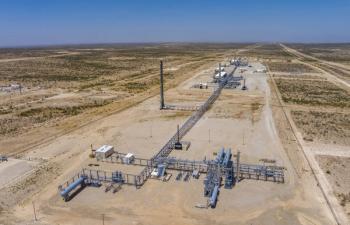
What’s Needed to Reach Net Zero
Analysis of the global energy transition readiness index
Siemens Energy and Roland Berger recently released a report highlighting the steps the energy industry needs to take in order to meet decarbonization requirements. The report, titled, “Bridging the gap – from perception to reality” shows the actions required to meet net zero carbon emissions standards. Torsten Henzelmann, Global Head of Energy and Utilities at Roland Berger, says, “When thinking about collaboration efforts and complex global solutions, we should consider which form of cooperation is the fastest and is best suited for future technologies”. The essence of the report is it will require mutual risk at all levels of industry across the globe to meet these demands.
Specifically, the demands in reference are the “Lower global temperatures by 1.5°C” climate initiative. They’ve concluded that limiting global temperatures to pre-industrial levels is paramount, and many world governments agree, implementing much more stringent preventive policies. Christian Bruch, President, and CEO of Siemens Energy, says, “Each country has different challenges and target positions, so it needs specific answers to drive the energy transition. And this is where the Global Energy Readiness Index comes into play”. That level of specify is key, since not every location can commit equally to the new landscape.
To endure the energy transition, the report lays out five steps. The first is to expand renewables. This includes wind, solar, batteries, hydro, and now nuclear. Secondly, the industry must strive to improve energy efficiency. While many turbomachinery operators are already pushing their equipment into extreme tolerances, more is expected. Third, the electric grid must be strengthened. An easy and effective solution is to invest in more power plants or provide mobile power solutions to key areas without stable access to the grid, such as Texas, California, or Algeria. Fourth, existing infrastructure is to be exploited. Finally, the supply chain must be managed better to optimize costs. It seems to be a very tall order, but one the report claims energy experts look forward to, based on a survey pool of over 2,000 participants.
Each region in the world has a different level of industrial “maturity”, and thus falls at different spots on the energy transition readiness index. For example, North America is 34% ready for the transition, while Europe is 33%. The Middle East and Africa fall behind those at 26%, with Asia Pacific at 25%. Latin America is the least capable of coping with the energy transition, with only 22% readiness on the scale. Certain regions are currently in the process of supplementing fossil fuels to lower carbon emissions, while others are still on the cusp of dropping coal and picking up gas. Even more disparate, some areas have yet to find any reliable power. Care must be taken when applying blanket solutions. This requires investment and research from companies operating in less developed areas of the world to meet these goals, while keeping up with advancing infrastructure and technological needs.
Next on the plate is the case of perceived emissions. Many were asked if they believe levels of CO2 had fallen, remained the same, or increased since 2005. The report also asked what levels would be like in 2030. The report found that a surprising number of participants in the survey believed levels were down since 2005. For Asia Pacific, Middle East and Africa, and Latin America, with their developing economies, emissions have gone up substantially. Estimates bring it as much as 50% for Asia Pacific and the Middle East and Africa. Thus, each part of the world has its own goals for 2030 reduction thresholds. EU and NA want to hit 49% and 46% respectively, while developing regions would be happy to see a 37% reduction.
The report ends by highlighting energy priorities in detail. Top of the list is phasing out coal, which is worse than natural gas for emissions. Next, is the implementation of energy storage solutions. Hydrogen is also mentioned, included in the “Power-to-X” category. Emission markets need to be set up to act as economic incentives to pursue decarbonization. The alignment of these goals across continents, countries, and sectors is the true challenge, one which the report mentions but doesn’t explicitly address. Ultimately, this report should be taken with skepticism and caution. While it sounds good on paper to commit to a greener future, the reality is much of the world is simply not ready to approach the problem. Undeveloped areas of the world need to focus on obtaining reliable electricity, how many greenhouse gases are produced takes a back seat to establishing basic utilities for now.
Newsletter
Power your knowledge with the latest in turbine technology, engineering advances, and energy solutions—subscribe to Turbomachinery International today.





